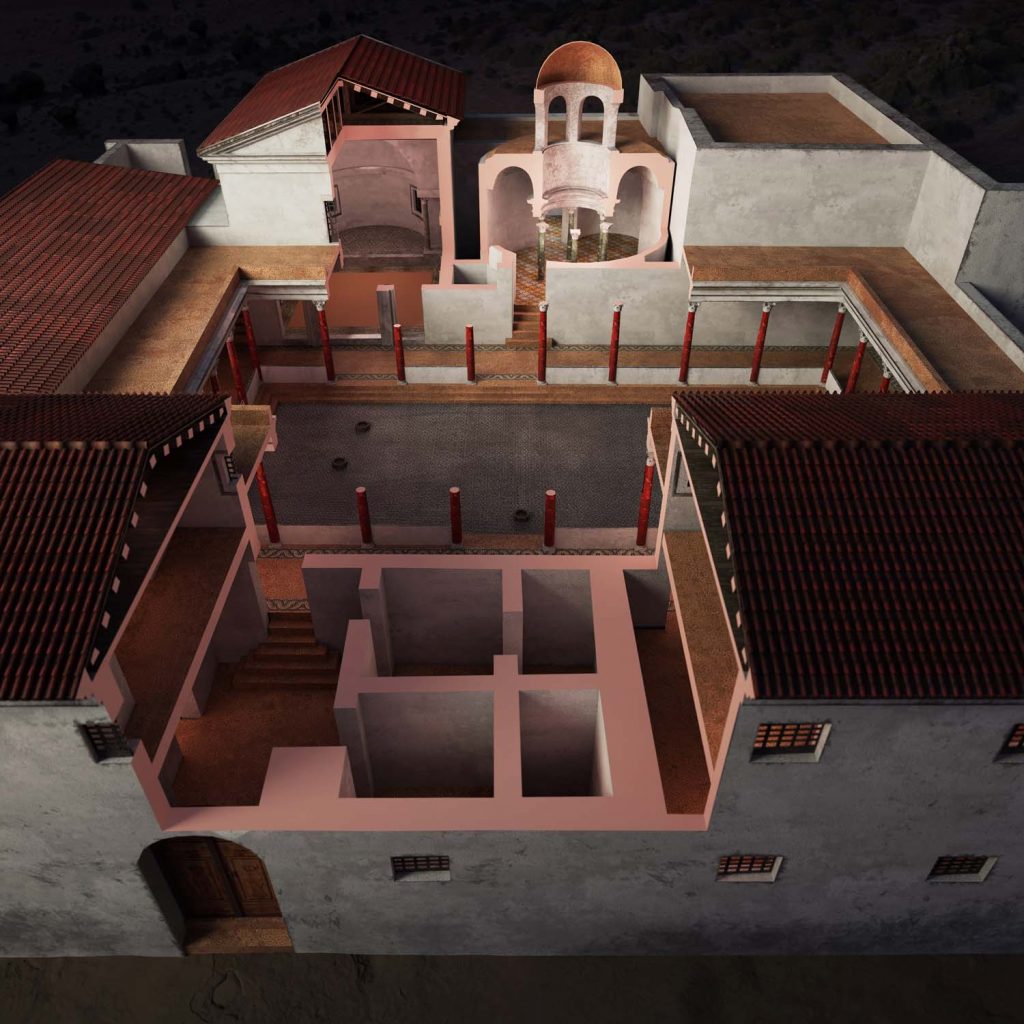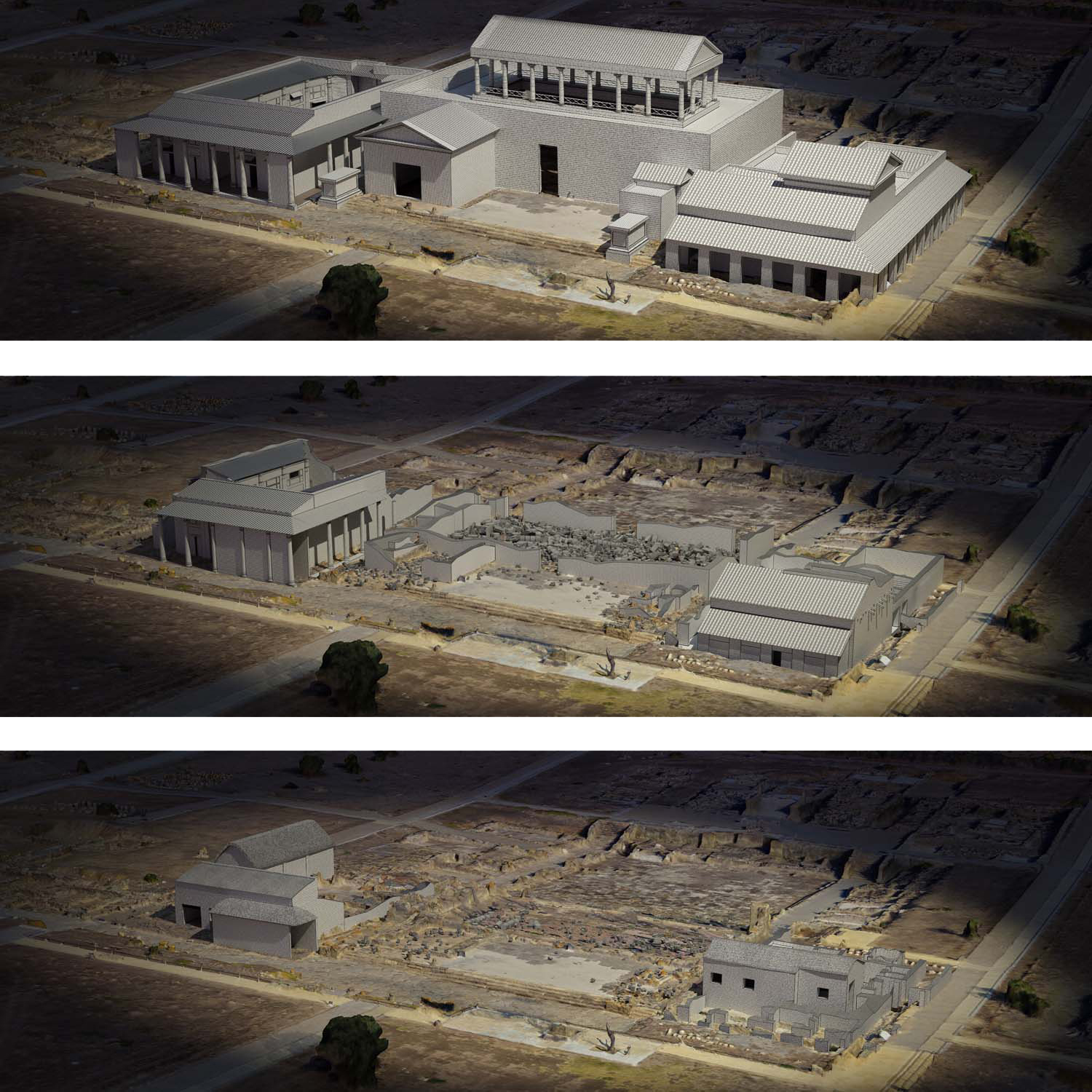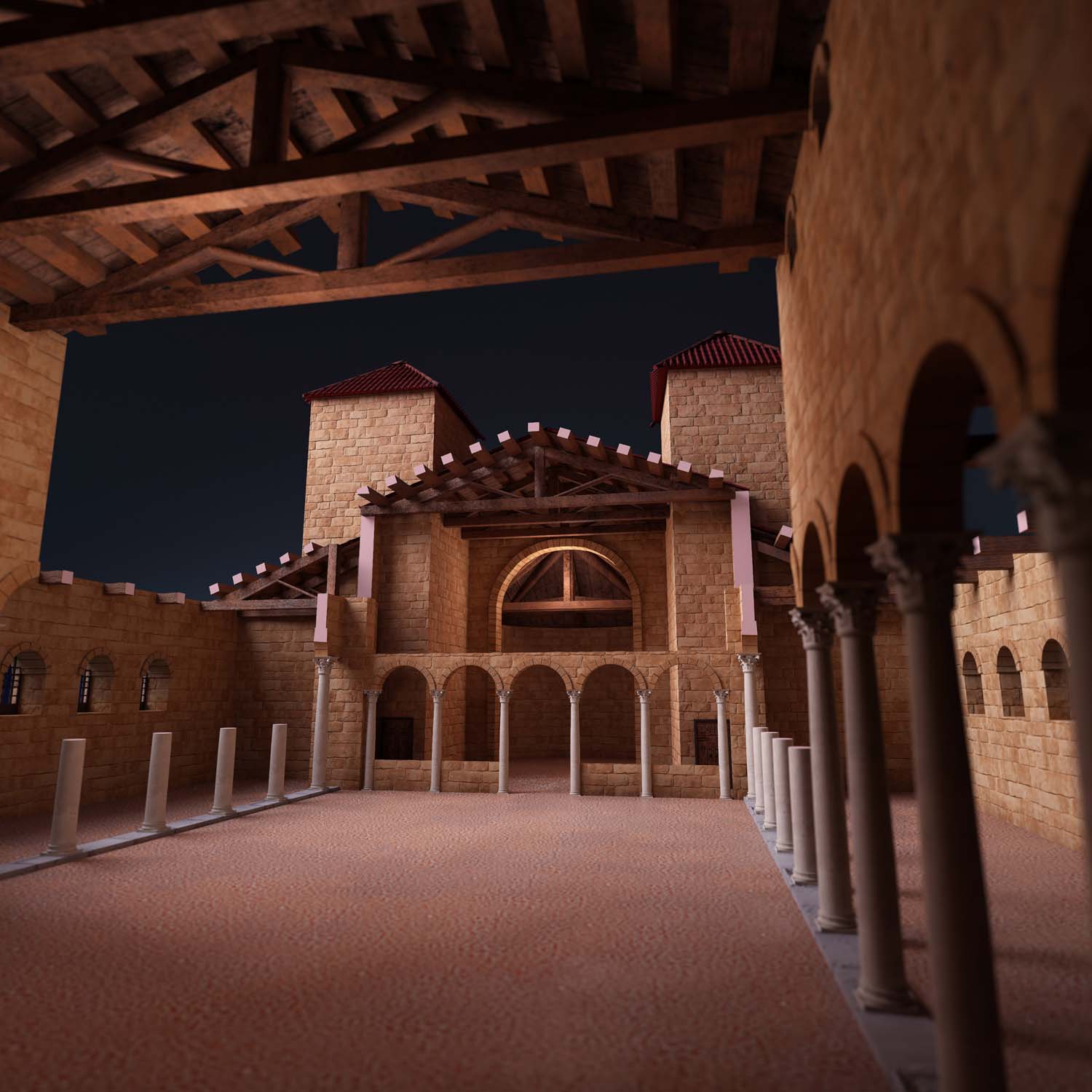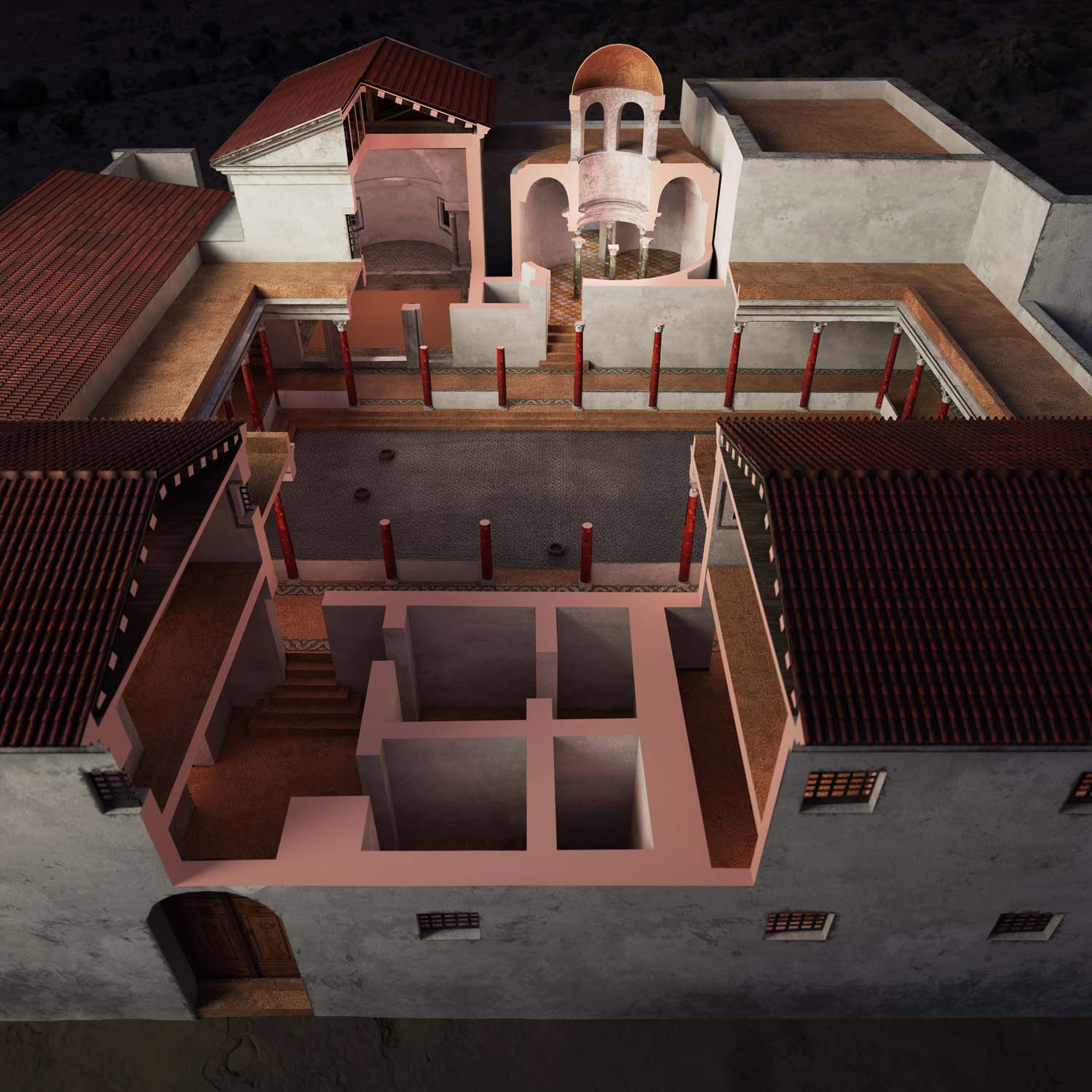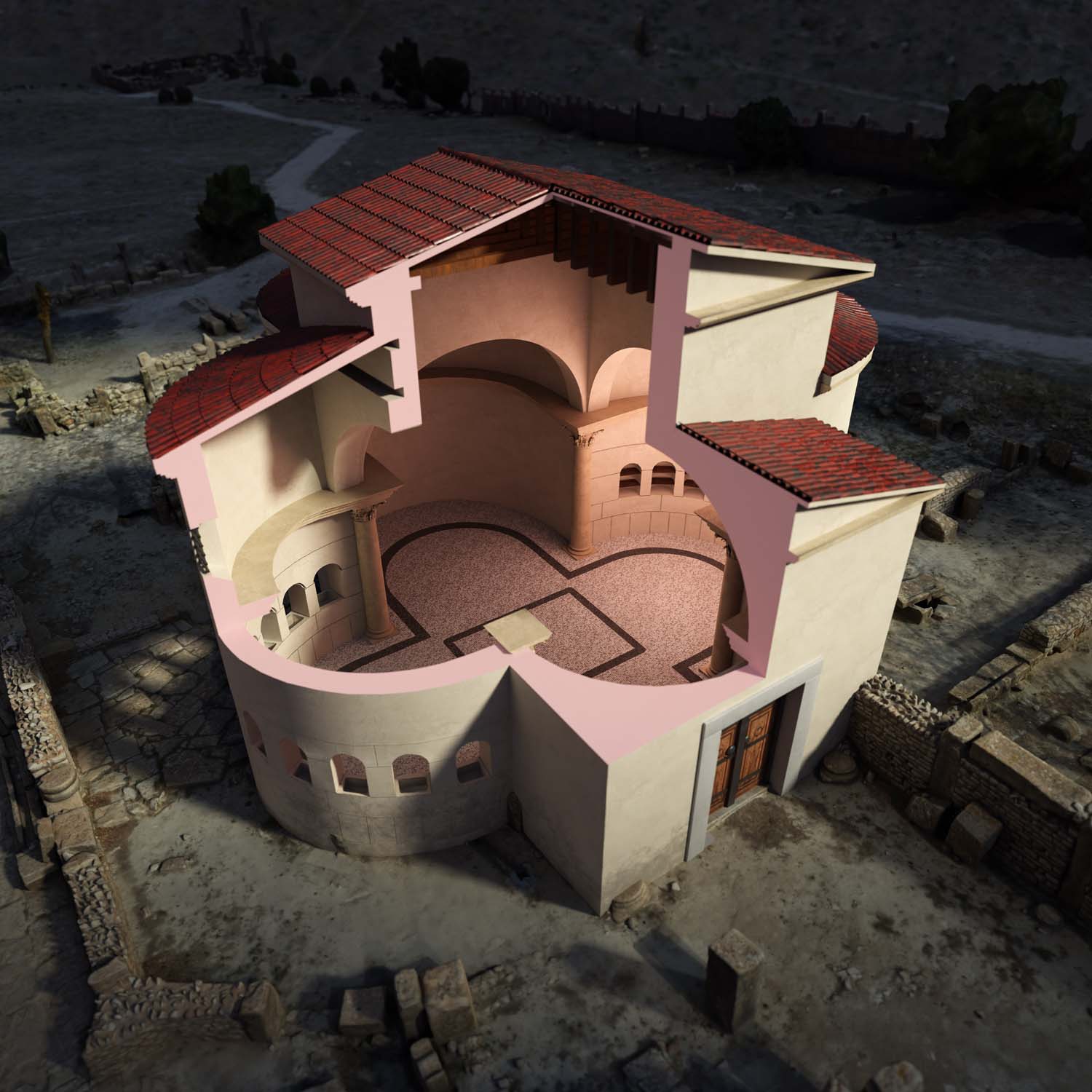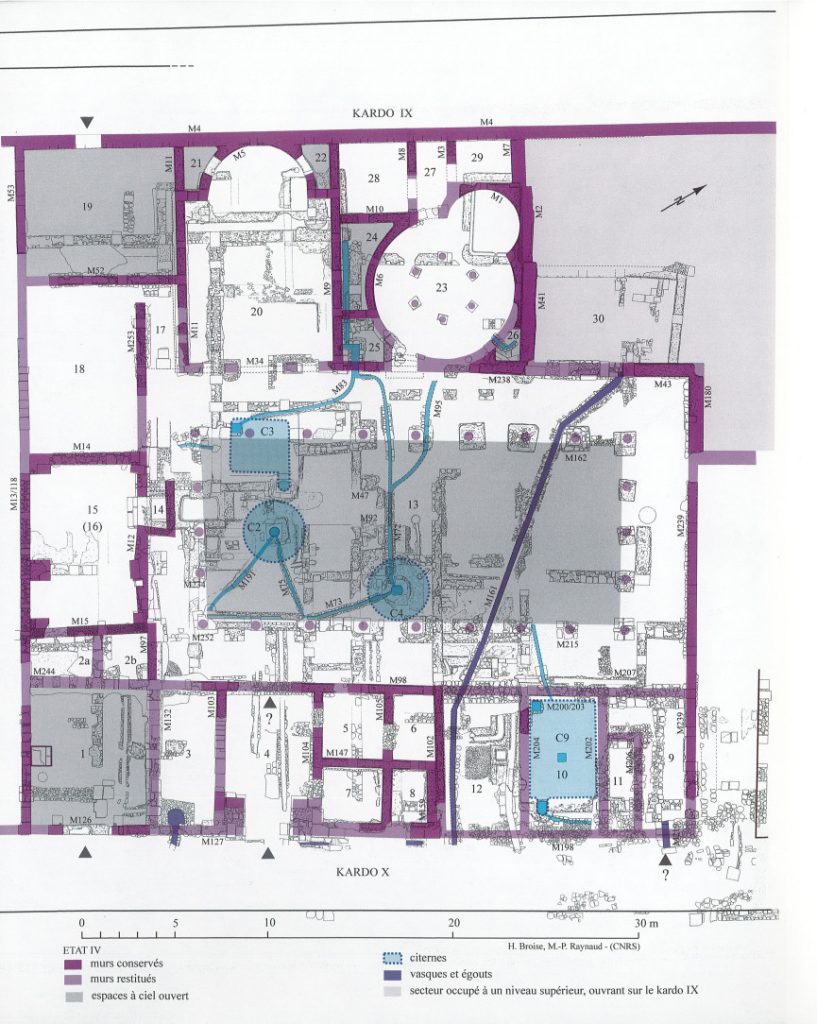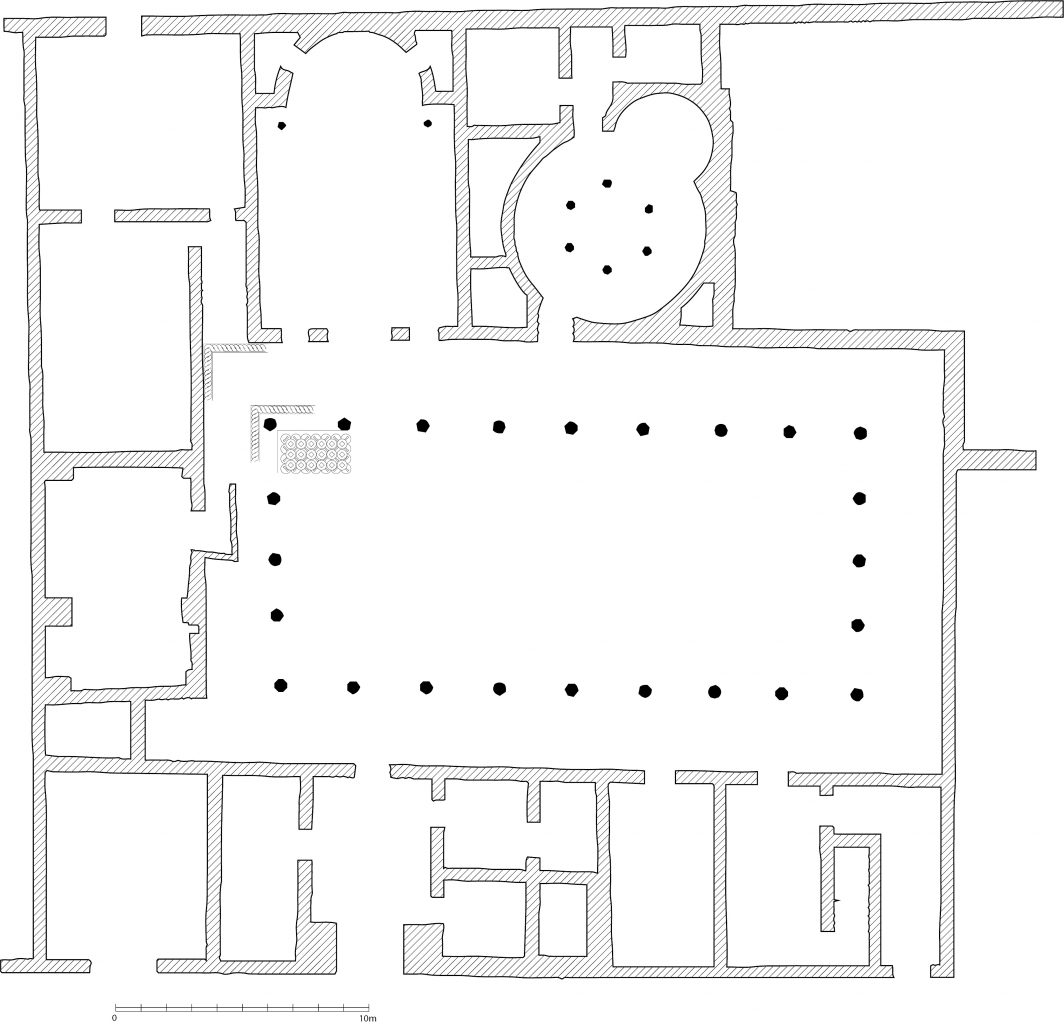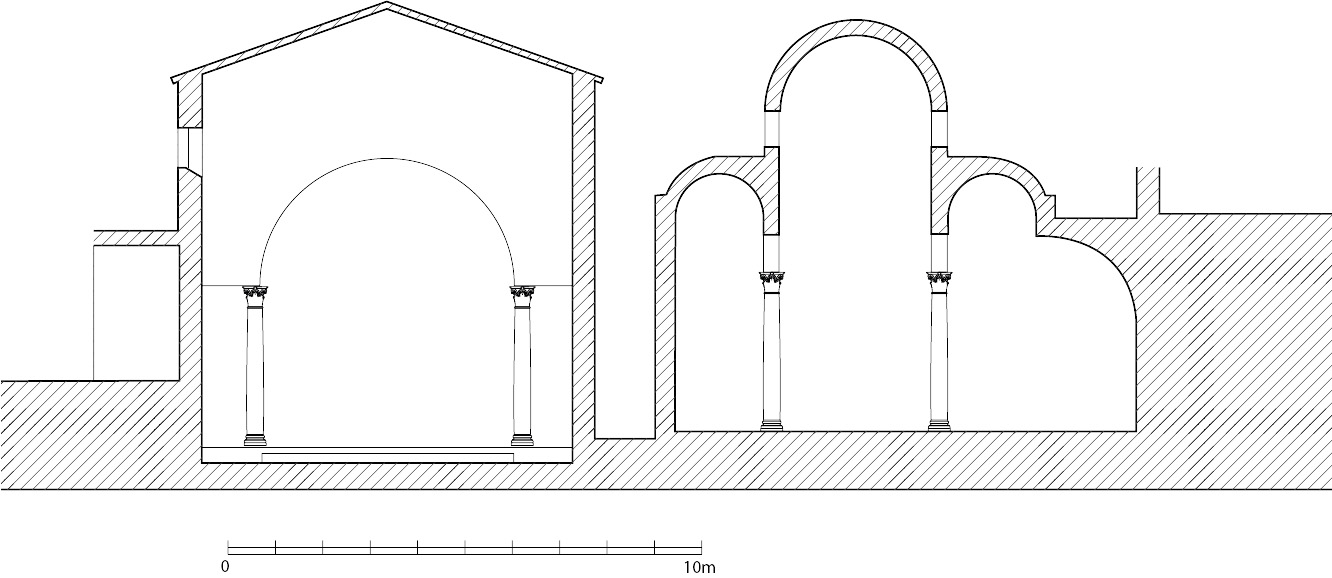THE ‘Maison de LA ROTONDE’ (CARTHAGE, TUNISIA)
The “House of the Rotunda”, located on Carthage’s Odeon hill, is a rich aristocratic residence built in the Flavian period, which, however, enjoyed its most sumptuous period in the late 5th century. This late phase is represented here. This example shows that the city of Carthage, although conquered by the Vandals, was still inhabited by wealthy people, with the aristocracy choosing to remain there throughout Late Antiquity. It offers a counterpoint to the image often conveyed of an impoverished and degraded Late Antique town. This aristocratic dwelling was excavated between 1920 and 1930. The building was the subject of a meticulous architectural study, resulting in extensive documentation and a reconstruction.
Questions have arisen here as to how the wealth of the house and its decor can be accurately, thoroughly and appropriately represented – and possibly realistically – but always through the architectural spectrum alone. The quality of the materials and structures, the profusion of elements of architectural decoration, the polychromy of the marble and mosaics and the diversity of the motifs were all conducive to expressing the colour of these elements. The 3D model opens up by the arch and the angle from which it is viewed. This allows us to appreciate the composition organised around a vast peristyle. They also give an idea of the unusual layout of the room that gives its name to this domus, a rotunda set in a square and extended by an apse in one of its corners.
Suggested Bibliography
BALMELLE, Catherine. Carthage, colline de l’Odéon maisons de la rotonde et du cryptoportique:(recherches 1987-2000). Carthage, colline de l’Odéon maisons de la rotonde et du cryptoportique, 2012.
Read online
BALMELLE, Catherine, BROISE, Henri, DARMON, Jean-Pierre, et al. Carthage, colline de l’Odéon. Recherches franco-tunisiennes 1987-2000. Les nouvelles de l’archéologie, 2011, no 123, p. 49-52.
Read online
BALMELLE, Catherine, KHADER, A. Ben Abed-Ben, BOURGEOIS, Ariane, et al. Vitalité de l’architecture domestique à Carthage au Ve siècle: l’exemple de la maison dite de la Rotonde, sur la colline de l’Odéon. Antiquité Tardive, 2004, vol. 11, p. 151-166.
Read online
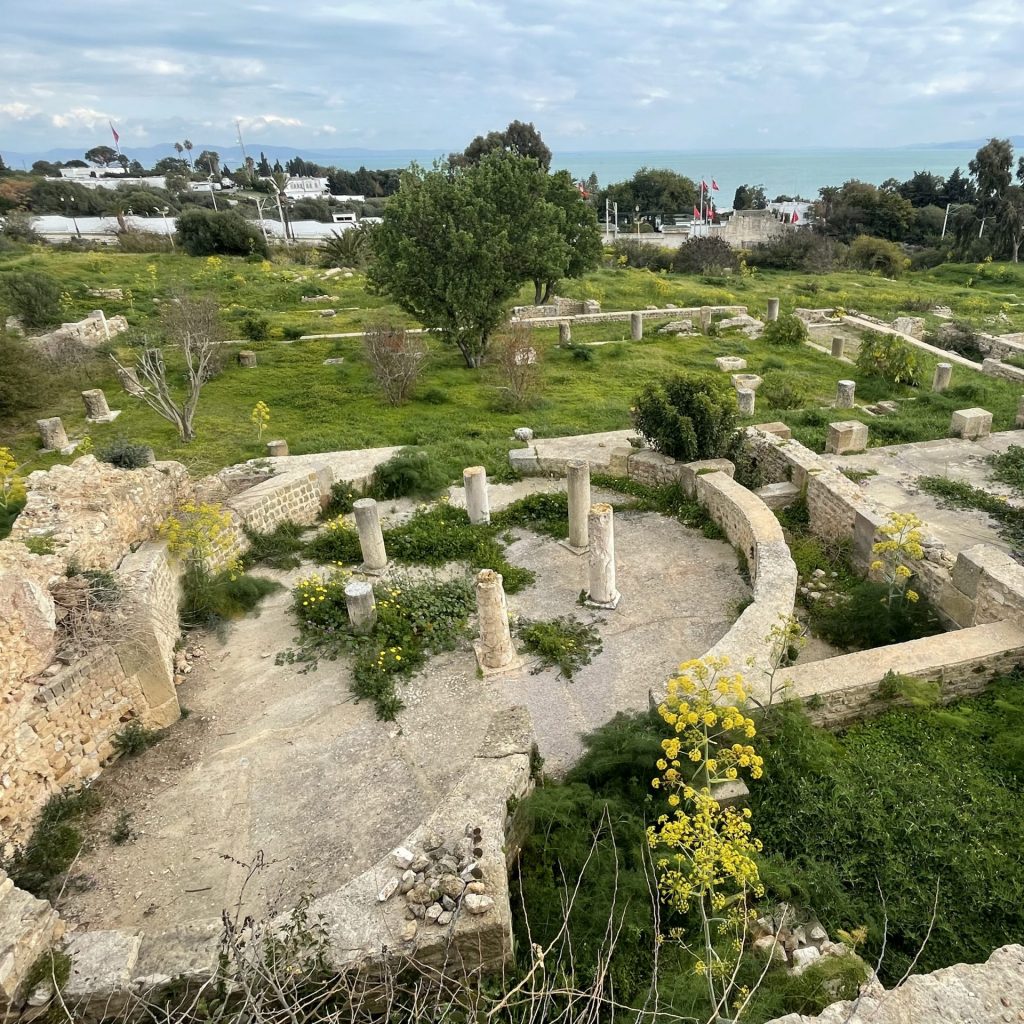
© LIENSs – CNRS (L. Brassous)
